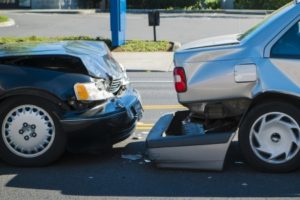
But occupants of the front vehicle are not the only ones who could be hurt in a rear-end crash. The driver of the rear vehicle could also be injured in the accident. When that happens, he or she needs to understand their right to receive compensation for injuries incurred.
In a Rear-End Collision, Can the Driver of the Rear Car Get Compensation?
In California, every driver is expected to exercise reasonable caution behind the wheel. California Jury Instruction 700 says that “the failure to use reasonable care in driving a vehicle is negligence.” When a driver’s negligence causes a crash, the careless driver is responsible for compensating accident victims. Personal injury or wrongful death claims can be made against a negligent driver, and the driver’s insurer will pay victims up to the policy limits if its policyholder was to blame.
Drivers are expected to leave a safe following distance and avoid tailgating. Tailgating usually means the rear driver is being negligent. His carelessness in following too closely is usually presumed to be the cause if there is a crash. This helps occupants in the front vehicle make their car accident claim.
Sometimes, however, the driver in the rear is actually not the only one to blame for a rear-end collision. If the rear driver can prove the driver in the front car was at least partially responsible for the crash, the driver in the rear could get some of his damages paid for. He can file a claim against the front driver for the front driver’s part in causing the accident. California’s comparative fault rules – explained in California Civil Jury Instruction 405 – allow the driver of the rear vehicle to be compensated for a percentage of his damages. The percentage he is entitled to will be equal to the percent the front driver is determined to have been at fault for the accident. Everyone bears their share of the blame.
The specific level of responsibility the driver in the front vehicle has is going to vary depending upon that driver’s behavior. Examples of situations when the driver in the lead vehicle could be considered at least partially liable for a rear-end accident include:
- when the front driver cut off the rear car;
- when the front driver reversed unexpectedly and hit the car behind him;
- when the front driver suddenly stops to make a turn but doesn’t execute the turn; and
- when the driver in the front vehicle has brake lights which do not work.
- when the driver in the front vehicle strikes a vehicle in front of him BEFORE he is then hit from behind
It will be up to the driver in the rear car to make a convincing case that the driver in the front car was at least partially responsible for the crash. This can be done with:
- witness testimony;
- expert testimony from crash reconstruction specialists;
- photographic evidence; and
- police reports from the crash scene.
Rear drivers can also make a claim if someone else, other than the front driver, was liable for the crash. For example, if the rear driver got into a rear-end collision because his brakes failed due to a design defect in the car. In that case, the rear driver could sue the car maker.
Getting Help from a Long Beach Car Accident Lawyer
Your Injuries are Personal to Me
A Long Beach car accident lawyer will help victims in rear-end crashes, and other types of accidents, make claims for compensation. I can put together a case to show the other driver was to blame.
Call the Law Office of Michael D. Waks at 888-394-1174 or use the convenient online contact form to schedule a free consultation to speak with a Long Beach car accident lawyer to learn how I can help you if you’ve suffered a car accident injury. You will be under no obligation and you will never pay any money unless you recover compensation for your losses.
You can also download my convenient glove box checklist to keep in your car so you will know what to do if a crash occurs.
- How to Help Your Loved One Cope with a Spinal Cord Injury - October 27, 2021
- How Can I Prove a Motorist Fell Asleep in Traffic? - October 20, 2021
- Filing a Truck Accident Claim? Avoid These Common Mistakes - October 13, 2021